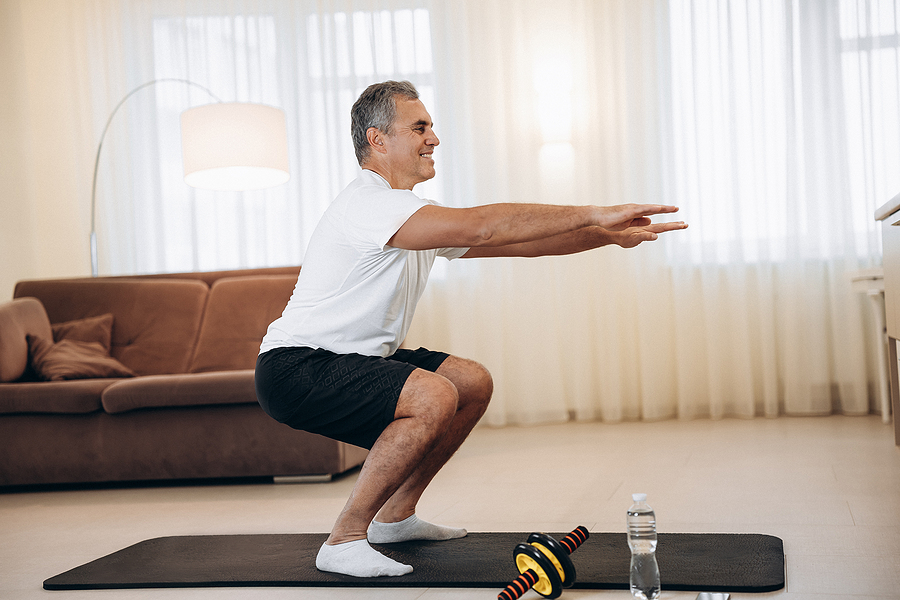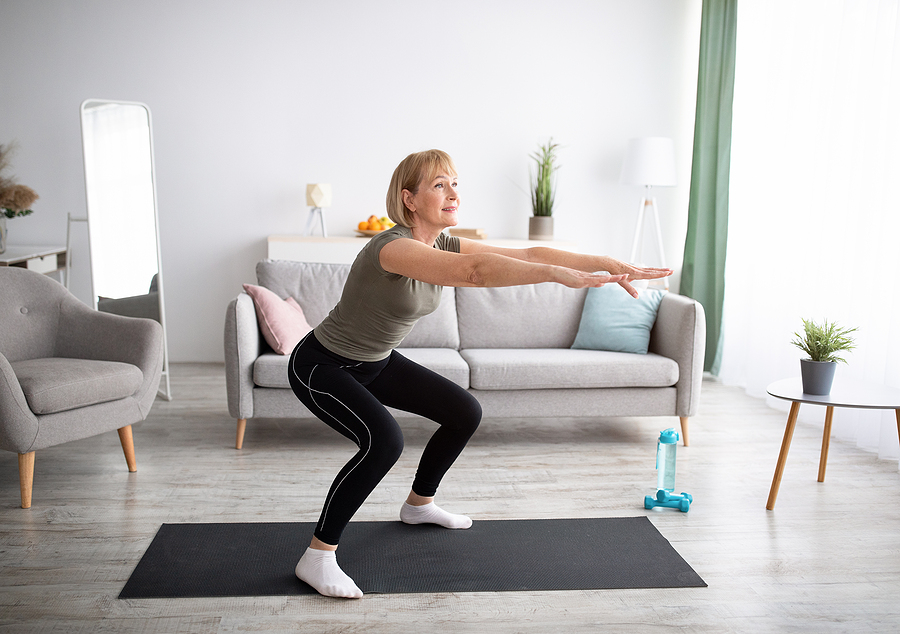The five best easy moves to stay fit at any age
These five low-impact moves are key to healthy ageing and can be done with small weights, resistance bands or your own body weight
Think fitness is just a young woman’s game? Think again. There’s no reason why we can’t stay sprightly and strong throughout our lives, but more often than not, it comes down to efficiency. In these ever-busy times, bad habits can creep in and our fitness levels take a hit. A YouGov survey found that younger people are more likely to exercise, with levels dipping to their lowest in women aged 35-54, typically the most ‘busy’ age group. But it needn’t be so, says Caroline Bragg, master trainer at gym chain Frame (moveyourframe.com). Keeping yourself in fine fettle can be as easy as mastering a few simple moves. You can do them at any age, and they’re always effective. Here are Bragg’s five moves for life. From 22 to 62, these back-to-basics exercises will keep anyone on top form. For each exercise (apart from the breathing), allow a short rest between each set, of up to two minutes.
Diaphragmatic breathing
WHY?
‘Proper breathing engages our pelvic floor and core, and is a useful, lifelong remedy for stress. A strong pelvic floor is crucial in guarding against incontinence, which can put women off exercise for fear of embarrassment. Diaphragmatic breathing also works the transversus abdominis – your inside tummy muscles, or inner core. That’s what will keep us strong until we’re 80, rather than our Peter Andre six-pack.’
HOW?
Inhale through the nose, and imagine the back of your ribcage is expanding like two balloons. You want to spread the oxygen right down to the lower lobes of the lungs – it’s a Pilates-style breath. Exhale fully through the mouth, as if you’re blowing out a candle on a cake – you want to make that breathy, seashore sound. Make sure you completely empty your lungs. Next, involve your pelvic floor. Exhale and lift it by drawing in the belly button, and then inhale and release – that’s what happens naturally, but sometimes our breathing patterns get a little messed up, and we put force down on the pelvic floor, which can lead to dysfunctions. Try performing five inhales and exhales daily to centre and connect.
Deadlift
WHY?
‘This really is not just a move for weight-lifters! A proper deadlift activates a lot of the posterior chain – which includes your hamstrings, glutes and upper back. It’s important to keep these strong, especially if you have a job where you’re sitting down a lot, you’re picking up grandchildren, or you enjoy gardening into your 60s. Start off perfecting your form, then progress to using a weight. Begin with resistance bands, then work up to barbells – you’ll build bone density, too. As we get older, this decreases, so it’s important to include some weight-bearing resistance work.’
HOW?
Stand with your feet hip-width apart, then start to hinge forwards from the hips, pushing your bum and hips back, with a slight bend in the knee so that you’re able to maintain a flat back. First engage your core, and if you’re using a weight, pick it up. Then drive up through your heels, keeping your back straight, and engage your glutes at the top of the move. Slowly return to your original position, protecting your back by keeping your core engaged throughout. Perform three sets of 12-15 lifts.
Squat

WHY?
‘This is a functional movement that will see you through daily life. The squat promotes mobility in the knees, and primarily works your quads, glutes and hamstrings – the big muscles that are crucial for simple movements such as getting up from sitting. As with the deadlift you can include a weight to help build bone density.’
HOW?
Stand with your feet slightly wider apart than your hips, bend your knees and lower yourself as if you’re sitting down on a chair. Engage your core for stability (by contracting your abdominal muscles). Put your weight back over your heels, keep your back straight and squeeze your glutes. Lower yourself down until your thighs are parallel to the floor, and keep your knees tracking in line with your feet. Drive through your heels to come back up so you activate your posterior chain (see deadlift). Do three sets of 12-15 squats.
Kneeling to standing
WHY?
‘This is about getting up from the floor in the correct way. Again, it’s activating that posterior chain, and using the correct muscles to guard against bad posture. It’s a functional move that a lot of us don’t realise we use very often. It targets leg muscles, core and balance.’
HOW?
Start in a high kneel position (both knees on the floor, back straight), then take the right foot forward so the leg is bent at 90 degrees, foot flat on the floor. Engage the core, tuck the left toes under and drive through the heel on the right foot to come up to standing. Go back down the other way and swap legs. Repeat 12-15 times, performing three sets.
Standing row
WHY?
‘You know how you sometimes see older people who are hunched over? A few rows could help prevent that. Rows with a resistance band, or weights if you prefer, strengthen the upper back to protect against that rounding. They’re brilliant for posture in general, and great for anyone who sits at a desk or does a lot of carrying.’
HOW?
Loop your resistance band over a handle or bar at waist height, hold each end and position yourself at a point where there’s no slack in the band. Have your feet parallel, and your knees and shoulders relaxed. Inhale using diaphragmatic breathing, then, as you exhale, pull the band so that your elbows come past body line. Inhale to bring the band back to the starting point. You could do this sitting, too – just make sure you’re positioned with your feet flat on the floor and your shoulders and hips in line. Do three sets of 12-15 reps.
Find more great health, lifestyle and fitness content in healthy magazine and at healthy-magazine.co.uk
Disclaimer
All content on Silversurfers.com is provided for general information only, and should not be treated at all as a substitute for the medical advice of your own doctor or any other health care professional. Silversurfers will not be responsible or liable for any diagnosis made by a user based on the content on www.silversurfers.com and we are also not liable for the content of any external websites or links from or to Silversurfers to any other websites. Please always consult your own doctor if you’re in any way concerned about any aspect of your health.
ADVERTORIAL
Latest posts by healthy Magazine (see all)
- The five best easy moves to stay fit at any age - June 28, 2021
- How to have glowing skin in your 50s - June 1, 2021
- Should you be eating more plant-based? - May 5, 2021
- Four things that could be causing your thinning hair - March 29, 2021
- What type of headache do you have? - March 1, 2021






















